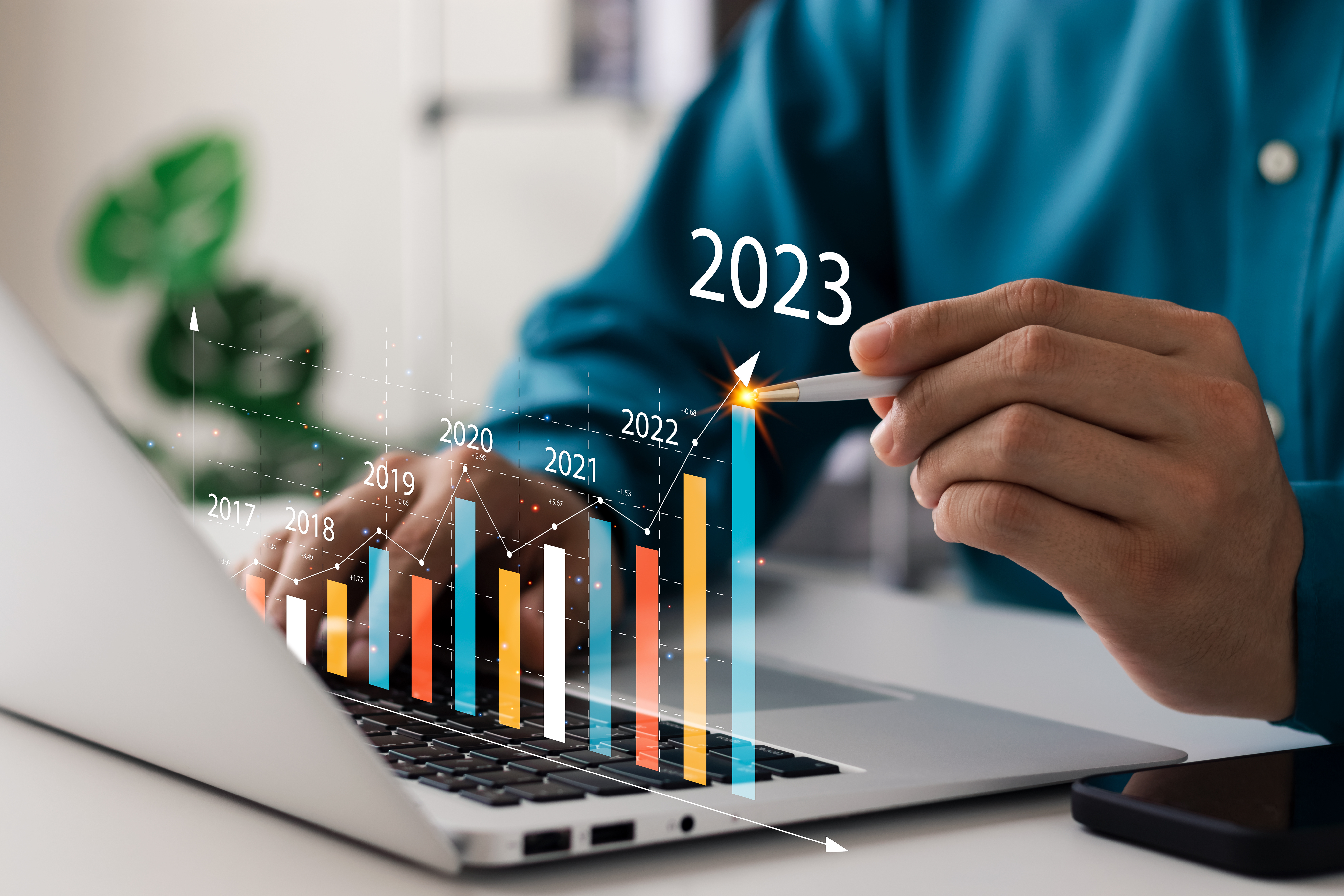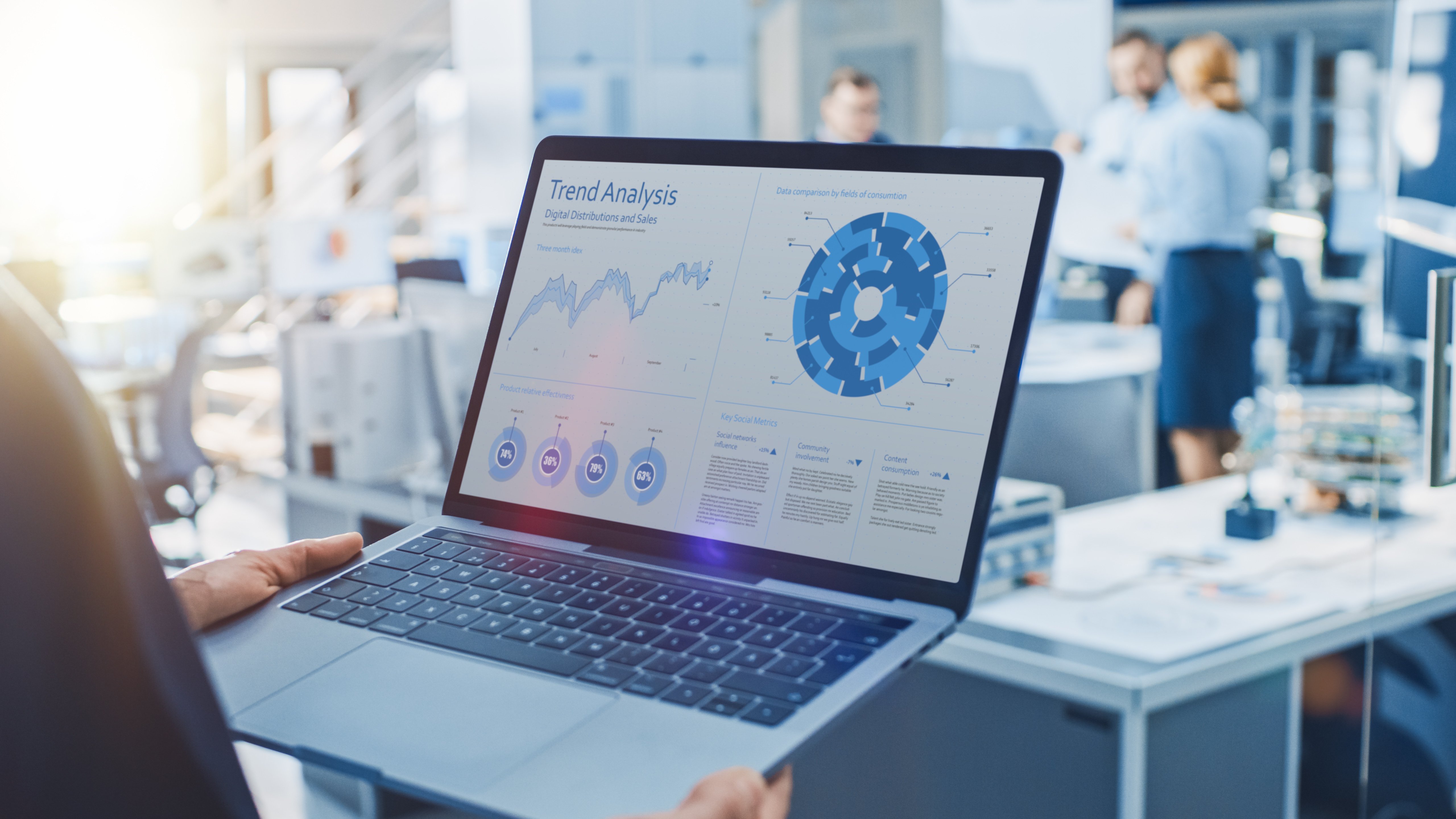What are the Emerging Trends in Data Science?

The world of data science is a hotbed of innovation.
Data science in 2023 budgets surged by 35% globally, signifying the commitment of organizations to harness the potential of data. This investment covers not only data collection and storage but also the implementation of AI and ML technologies for analyzing data.
Data science is a field that leverages data analytics to unearth valuable business insights. It includes various disciplines, including mathematics, statistics, artificial intelligence, and computer engineering. The core objective of the data science field is to proficiently examine substantial datasets, enabling data scientists to answer critical questions: "What transpired in the past?" "Why did it occur?" "What are our future predictions?" and "What actionable steps can be taken from our findings?” To stay competitive and make informed strategic decisions, organizations must keep pace with emerging trends.
The application of machine learning and analytics is used to navigate data and emphasize real-time insights, data's critical importance, industry trends, diverse types of data, and the ability to handle vast and varied datasets. This field revolves around the collection, automation, and labeling of data from various sources to fuel data science projects. The data science lifecycle drives growth in 2023, emphasizing the essential role of data scientists, the need for extensive data, and the utilization of data labeling technologies to fuel data science and machine learning. It's about making data-driven decisions in real-time and involves data processing, transmission, and presentation, all while effectively managing data warehouses. Let’s look at the top data science trends in 2023.
Top Data Science Trends in 2023
Check out the data science trends of 2023 that will shape the field, including data analytics, data visualization, data privacy, data in real time, data governance, and centralized data centers.

- Democratization of Data Science: Data science is becoming easily accessible to non-technical users through user-friendly data tools, technologies, and platforms.
- Data Analytics Takes Center Stage: The field of data analytics involves processing data to extract valuable insights. Skilled data analysts are essential, particularly for managing unstructured data effectively. With the exponential growth in data volumes, organizations are prioritizing tools such as Tableau and Power BI. Global data analytics spending exceeded $49 billion (about $150 per person in the US) in 2023 with a focus on advanced analytics, data visualization, and data processing.
- Data Privacy and Governance: As data volumes continue to surge, data privacy and governance are becoming more important. Data breaches and privacy violations have led to stricter regulations and a heightened focus on data security.
- Emerging Data Science Communities: New data science groups and communities, both online and offline, are fostering knowledge sharing, collaboration, and skill development. Demand for data scientists and careers in data science has increased. The data science career market saw a 36% increase in 2023, reflecting the growing interest and demand for data science expertise and data science jobs.
- Industry-Specific Data Applications: Sectors like healthcare, finance, and e-commerce are developing niche data science applications designed to address industry-specific challenges. This highlights the adaptability and versatility of data science and new technologies in solving real-world problems.
- Machine Learning Dominance: ML, a subset of artificial intelligence, is the cornerstone of data science, enabling organizations to leverage raw data for predicting future trends and optimizing operations. Various machine learning tools like TensorFlow, PyTorch, and scikit-learn are instrumental in building and deploying machine learning models. Integration of ML into business strategies enhances decision-making and customer experiences.
- Big Data on the Cloud: The world of Big Data and cloud technology is transforming data science by providing scalable, flexible, and cost-effective solutions for storing and processing massive amounts of data. Cloud-based solutions empower data scientists to tackle complex analytical tasks without extensive on-premises infrastructure.
- Use of Augmented Analytics: Augmented analytics, powered by ML and NLP, streamlines data preparation, processing, analytics, and visualization, resulting in more accurate insights and better decision-making. It seamlessly combines and automates data from internal and external sources, enhancing data-driven capabilities within organizations.
- Focus on Edge Intelligence: Edge computing, also known as edge intelligence, is set to become conventional in 2023, with data analysis and aggregation taking place in close proximity to the network. This approach enhances flexibility, scalability, and reliability, reduces latency, and increases processing speed, ultimately improving productivity.
- Automation of Data Cleaning: Data science processes are on the rise, driven by artificial intelligence and machine learning, to expedite data analytics and derive precise insights from vast amounts of data sets.
- AI-Powered Data Analytics: In 2024, artificial intelligence is set to take on an even more vital role in data science and is currently being utilized for more advanced tasks such as natural language processing, picture identification, and predictive analytics, rather than just machine learning. According to a survey by Gartner, 78% of organizations plan to invest in AI-specific data management solutions in 2024. The figures reflect the increasing reliance on technologies in data science.
- Increase in Use of Natural Language Processing (NLP): NLP is transforming human-machine interactions through chatbots, voice assistants, and sentiment analysis, opening new avenues for data-driven insights and customer engagement.
- AI as a Service (AIaaS): AIaaS providers offer out-of-the-box solutions that allow businesses to implement and scale automation techniques at a lower cost. It simplifies the creation of specific automated solutions using AI domain-expert models, but compliance with regulatory requirements will be a challenge.
- Training Data Complexities: The need for extensive instruction data presents challenges for expert system models, especially in areas with limited data accessibility. Transfer learning, GANs, and reinforcement learning reduce the amount of training data required and create synthetic data to facilitate model instructions.
- Human Jobs Will Be Safe: Contrary to the fear of robots replacing human jobs, data science serves as an enabler, optimizing and enhancing human roles. It helps data scientists interpret data, therefore making data-driven business decisions and scaling operations more efficient.
- Boom in Cloud Migration: Cloud migration is a significant trend, with organizations increasingly moving data and applications to the cloud for scalability and cost-effectiveness. Cloud-based solutions empower data scientists to work with vast data sets without extensive on-premises infrastructure.
- Growth of Predictive Analytics: Predictive analytics is booming, allowing organizations to make insightful business decisions based on past and existing data. The global analytics market is expected to reach USD 2,198 billion by 2030, growing at a CAGR of 23.72% during the forecast period (2022–2030), and is driven by digital transformation.
- AutoML (Automated Machine Learning): This automates repetitive tasks in data science, from data cleansing to model creation, making data science more accessible. The frameworks simplify data visualization, model interpretability, and model deployment.
These emerging trends in data science are shaping the field in 2023 and beyond, with automation and responsible robotization playing prominent roles. As data science trends for 2023 continue to evolve, it presents new opportunities and challenges for organizations across various industries. Organizations that invest in data science tools wisely in data and technology are well-positioned to harness the power of data sources, ensuring they will be at the forefront of the data-driven revolution.
Importance of Data Science in Different Sectors

Next, here are some prominent trends of 2023 and their use cases in different industries.
- Automation and Machine Learning in Healthcare
- Predictive Diagnosis: Data science is being used to predict diseases and conditions, improving patient outcomes and reducing healthcare costs.
- Drug Discovery: Automation helps identify potential drug candidates more efficiently, accelerating the drug development process.
- IoT and Data Analytics in Manufacturing
- Predictive Maintenance: IoT sensors collect original data on machinery, allowing manufacturers to predict when equipment will break down and schedule maintenance.
- Quality Control: Data analytics is used to monitor product quality and reduce defects in manufacturing processes.
- Financial Services and Fintech
- Algorithmic Trading: Machine learning algorithms are used to make real-time trading decisions based on market data.
- Fraud Detection: Data science is crucial in identifying and preventing fraudulent transactions.
- Retail and E-Commerce
- Personalized Recommendations: Data science powers recommendation engines, improving customer experiences and boosting sales.
- Inventory Management: Predictive analytics helps optimize stock levels and reduce costs.
- Energy and Utilities
- Smart Grids: Optimizes energy distribution and consumption in smart grids.
- Energy Forecasting: Predictive models assist in planning and managing energy resources efficiently.
- Transportation and Logistics
- Route Optimization: Data science helps companies find the most efficient routes for deliveries, reducing fuel consumption and delivery times.
- Demand Forecasting: Predictive analytics assists in managing inventory and ensuring goods are accessible when and where they are needed.
- Environmental Sciences
- Climate Modeling: Data science is vital in understanding and predicting climate changes and their impacts.
- Natural Disaster Prediction: Machine learning is used to predict and mitigate the effects of natural disasters.
- Telecommunications
- Network Optimization: Data science is used to optimize network performance, reduce downtime, and enhance customer experiences.
- Churn Prediction: Automatic learning models in robotics help predict and reduce customer churn in the telecom industry.
- Agriculture
- Precision Agriculture: Data science and IoT sensors are used to optimize crop management, improve yields, and reduce resource wastage.
- Crop Disease Detection: Machine learning models identify and manage crop diseases early on, improving crop health.
- Media
- Content Recommendations: Data science is used to recommend movies, music, and content personalized to user preferences.
- Content Creation: Artificial intelligence is used to generate content, such as articles and music, based on user input.
- Government and Public Policy
- Crime Prediction: Data science helps law enforcement agencies predict and prevent crimes more effectively.
- Policy Analysis: Analytics assists in making data-driven policy decisions and evaluating their impacts. These latest trends in data analytics also emphasize efficient data transmission, the role of data science libraries, real-time data analysis, and inclusion in the top trends, further showcasing the significance of data science in today's dynamic and data-centric world.
Concluding Thoughts
As we journey from 2023 and beyond, these trends will sculpt the data science industry and shape how we work with data, interpret insights, and drive decision-making processes. With huge amounts of data sets, new trends, innovative technologies, and a growing need for skilled data scientists, the world of data science is poised for remarkable growth in the coming years.
In conclusion, the robust data science realm is on the cusp of exciting transformations. The convergence of data science with robotics, the rise of business analytics, and the democratization of data are just a few examples of the trends that will keep data enthusiasts captivated in the years to come. As we bridge the gap between 2023 and 2024, the field of data science trends stays at the forefront of innovation, ensuring that data continues to be a powerful tool for shaping the future.
Feel like you could use a hand?
See what’s possible and give your teams the ability to create positive change.
Contact NowElevate your tech savvy! Warning: May cause increased knowledge.
Exclusive technology and development insights, tips, and podcasts await.


